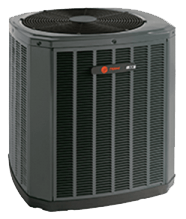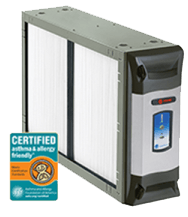
What You Need to Know About Home Thermostats
Every home with an HVAC unit also has a thermostat or two. If you live in a two-story home, you’ll likely have two thermostats - one for the upstairs and one for the downstairs. Many times, when homeowners experience issues with their heating or cooling, they assume the HVAC unit itself is to blame. You might be surprised to learn that, sometimes, it might be your thermostat, instead. It’s easy to confuse thermostat problems for HVAC problems, because either way, the HVAC unit doesn’t work the way you want it to. Thankfully, some simple problem solving and troubleshooting can go a long way towards figuring out what is wrong.
Read on to learn more about how thermostats work, how to fix them when they have problems, and what you can do to keep your HVAC unit working well all year long.
How a Thermostat Works
Thermostats are modern marvels, an invention that allows homeowners and business owners alike to control the temperature in one room or an entire building at the press of a button. While thermostats initially started out as an internal system within air conditioning units, they are now attached to HVAC units through wires.
The thermostat can then be set to bring the air temperature in a house up or down to the homeowner's comfort level. When the thermostat registers a temperature other than that which is desired, it will send a signal to the HVAC unit to turn on. Then, when the temperature is where you’ve set it to stay, it will send another signal and the HVAC unit turns off.
Thermostats have come a long way. No longer do you need to nudge the little dial and hope to hit the right temperature. Now, there are digital options and even “smart” options. For the ultimate in-home comfort and convenience, smart thermostats take all the guesswork, planning, and annoyance of having to remember to switch the temperature. With a smart thermostat, you can set where you want your whole house or even individual rooms to be. You can change the setting depending on the time of day or day of the week. Every customization is programmed in and then you can set it and forget it.
Fixing a Thermostat

There are a number of reasons why thermostats can break, stop working, or otherwise frustrate you when you’re trying to cool or heat your home. Here are a few examples:
- No Battery: Many thermostats are powered by both wiring and a battery. If your unit is battery powered, then it could just be that the battery finally gave out. This is the first area to troubleshoot. Replace the battery with a new one and see if your unit turns on and starts functioning again.
- No Power: If your unit is powered through wiring plugged into your home, ensure that your home’s wiring is working properly. Check the breaker and ensure that power is, indeed, flowing to the thermostat.
- Faulty Wiring: If a wire becomes disconnected or something chews through it, your thermostat will not function the way it should.
- Bumped Off: Sometimes the ‘on’ switch gets bumped to off. Check this, as well.
HVAC Maintenance Tips
By regularly maintaining your HVAC unit, you can be sure that your unit isn’t the problem. Have HVAC technicians come out twice a year to inspect it and perform general maintenance. Then, throughout the year, spot check your unit.
Ensure that there aren’t any unusual noises, like grinding, that might suggest an issue with the fan belt. Check to make sure your unit is free of rust and corrosion. Finally, ensure that the drainage pipe is working properly and not backing up into the unit.
Keep up with your heater or AC unit's maintenance, and you'll undeniably see benefits like better home comfort and fewer thermostat problems!
Award-Winning, Professional HVAC Techs
Since 1982, Wolfgang’s Cooling and Heating has been providing exceptional heating and cooling services in Gilbert, AZ! Every customer can expect trustworthy, honest technicians, on-time arrival, and no mess left behind. That's their promise on every service.
[press_release_images][/press_release_images]
[press_release_distributions id="81858"][/press_release_distributions]









